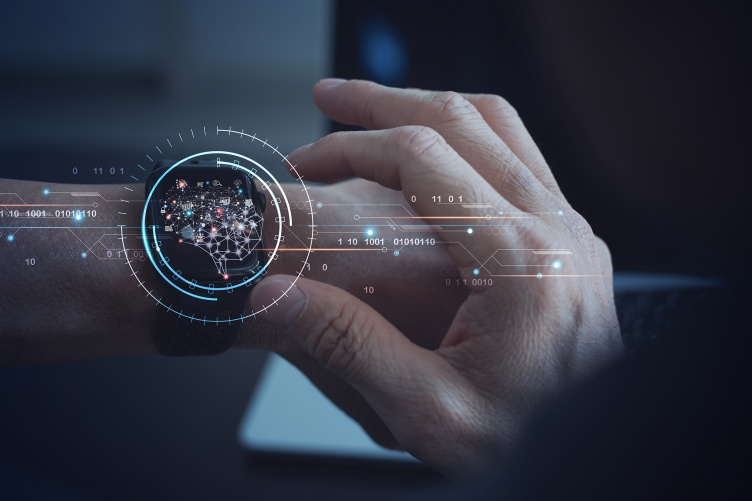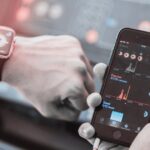In the realm of watch technology, the integration of artificial intelligence (AI) represents a pivotal leap into the future. What was once confined to science fiction is now becoming a reality, as AI transforms traditional timepieces and smartwatches alike. This article delves deep into how AI is revolutionizing watch technology, exploring its current applications, future potential, and the implications for both consumers and the industry.
Introduction
From the advent of mechanical watches to the rise of smartwatches, timepieces have continually evolved to meet the changing needs and desires of their users. Now, with the integration of AI, watches are poised to become not just tools for telling time but sophisticated personal assistants capable of learning, adapting, and enhancing daily life in ways previously unimaginable.
Understanding AI in Watches
AI in watches encompasses a broad spectrum of technologies and functionalities designed to augment user experience. At its core, AI enables watches to interpret data, make informed decisions, and provide personalized insights. This capability is made possible through advanced algorithms, machine learning models, and sensor integration, which collectively empower watches to understand user behavior, preferences, and surroundings.
Current Applications of AI in Watches
- Health and Fitness Monitoring: AI-powered watches can track vital signs, analyze exercise routines, and provide real-time feedback on health metrics. They monitor heart rate variability, sleep patterns, and even detect anomalies that may indicate potential health issues.
- Personalized Assistance: Watches equipped with AI can learn user preferences, such as favorite watch faces, preferred notification settings, and daily routines. This personalization extends to proactive suggestions, such as reminding users of upcoming meetings, recommending optimal routes based on traffic conditions, or suggesting breaks during intense activities to avoid fatigue.
- Language Processing and Voice Commands: Integrating natural language processing (NLP) allows users to interact with their watches through voice commands. AI algorithms understand and respond to spoken instructions, enabling hands-free operation for tasks like setting reminders, sending messages, or searching for information.
- Enhanced User Interfaces: AI contributes to more intuitive user interfaces on smartwatches, improving navigation, and accessibility. This includes predictive text input, contextual menu suggestions, and adaptive layouts that adjust based on user behavior and preferences.
- Predictive Maintenance: AI algorithms can analyze data from sensors within the watch to predict maintenance needs, such as battery life expectancy or mechanical wear. This proactive approach ensures optimal performance and longevity of the timepiece.

The Future Potential of AI in Watches
Looking ahead, the future of AI in watches holds promise across several fronts:
- Enhanced Context Awareness: AI-powered watches will become more adept at understanding and adapting to their environment. They can anticipate user needs based on context, such as adjusting display brightness in varying lighting conditions or recommending hydration reminders during physical exertion.
- Advanced Health Diagnostics: As AI algorithms become more sophisticated, watches may offer advanced health diagnostics beyond current capabilities. This could include early detection of diseases through subtle changes in biometric data or continuous monitoring of chronic conditions with actionable insights for users and healthcare providers.
- Integration with Smart Home Ecosystems: AI-enabled watches will likely play a central role in connected smart home ecosystems. They could act as hubs for controlling IoT devices, managing energy consumption based on user habits, and enhancing overall home automation through seamless integration with other AI-driven technologies.
- Emotional Intelligence and User Well-being: Future AI watches might incorporate emotional intelligence algorithms to detect stress levels, emotional states, and provide personalized recommendations for stress management or relaxation techniques.
- Augmented Reality and Virtual Assistants: Integration with augmented reality (AR) could transform how users interact with their watches, overlaying digital information onto the physical world. Virtual assistants powered by AI could provide real-time translations, identify objects, or offer guided tours based on location awareness.
Ethical and Privacy Considerations
As AI capabilities in watches expand, ethical and privacy concerns must be carefully addressed. Issues such as data security, consent for data usage, algorithmic bias, and the potential impact on personal autonomy require thoughtful regulation and transparent practices from manufacturers.
Conclusion
In conclusion, the integration of AI in watch technology represents a transformative shift, promising enhanced functionality, personalization, and user interaction. From health monitoring to predictive insights and seamless integration with daily life, AI-powered watches are poised to redefine what it means to wear a timepiece. As advancements continue, the convergence of AI with traditional craftsmanship and modern technology heralds an exciting future where watches not only tell time but enrich and empower the lives of their users in profound ways.
3.5



